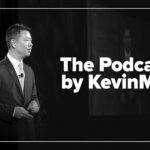As a pediatric dentist and owner of a tongue tie center, I pride myself on having a conservative and collaborative approach when it comes to treating oral restrictions. Too many providers rush to release, and too many parents are misinformed thinking the release is going to be a “magic fix.”
I’ve compiled a list of important things that I feel everyone (both providers and parents) should know about tongue-ties and lip-ties.
1. Everyone has a frenum, which connects the tongue to the floor of the mouth. Simply seeing a “string” under the tongue does not confirm the presence of a “tie.” It’s necessary to determine if the tissue allows full movement and function of the tongue or if a restriction of tongue mobility is present.
2. There is a difference between tight tissue and a functionally “tied” tissue. An experienced provider can distinguish between the two and determine if a symptomatic functional restriction is present.
3. If a symptomatic functional restriction is present, a release known as a frenectomy is indicated – preferably using a CO2 laser. The CO2 laser promotes rapid healing and minimizes the risk of bleeding and infection. It is also associated with the lowest intra-operative and post-operative pain, as well as the quickest procedure time. Scissors pose challenges with hemostasis, precision, and the ability to navigate anatomical complexities. In addition to a release, aftercare exercises are critical to help maintain and improve mobility and flexibility of the healing tissue.
4. The release of the frenum is just one piece of the puzzle. It takes teamwork to make the tongue work! Following a release, it takes time to figure out what to do with the new mobility of the tongue and lip, so support from professionals like lactation consultants, speech therapists/OT/PT, and myofunctional therapists is key to the success of treatment.
5. Many health care providers do not fully recognize the complexity of oral restrictions. It’s recommended to consult with an IBCLC (International Board-Certified Lactation Consultant), feeding therapist, myofunctional therapist, or an experienced release provider (such as a pediatric dentist or an ENT).
6. In order to provide optimal care for the mother-infant dyad, it is critical to be able to identify signs and symptoms of oral restrictions. Not every oral restriction requires release, but every restriction does require referral to appropriate specialists (such as an IBCLC or feeding therapist). Babies with a tongue-tie and/or lip-tie may experience trouble latching, poor weight gain, clicking sounds while feeding, as well as increased air intake due to a disrupted seal leading to reflux symptoms and gassiness. Mothers may experience symptoms like nipple pain, bleeding, ineffective breast drainage, clogged ducts, mastitis, and milk supply issues.
7. Untreated symptomatic functional restrictions can have long-term implications and lead to dental problems, speech delays, picky eating, improper development of the jaws, orthodontic issues, as well as sleep disordered breathing.
8. Find a conservative, experienced release provider. Easy ways to identify a good release provider include asking the following questions: Do you provide any aftercare exercises or follow-up visits? Follow-up is essential. If your release provider does not provide a 1-week follow-up, find a different provider. Do you provide virtual follow-up? Follow-ups are being done to evaluate the healing wound and ensure aftercare stretches are being done with enough tension. This is not possible to evaluate virtually. Do you use a CO2 laser? If the provider uses scissors, a diode, or an erbium laser, I would recommend a different provider.
It is our responsibility as health care professionals to provide our patients with the best care possible. That means we must continue learning. In dental school, I was taught “tongue-ties are not real and do not need treatment.” In residency at a U.S. News top 10 children’s hospital, I was told, “If a child can stick their tongue out, they are not tongue-tied.” It took years of seeing restrictions and CE courses to know the best way to manage restrictions. It is critical to identify and refer as needed, but equally important is knowing when to treat and when NOT to treat. Tongue-ties and lip-ties require a collaborative effort to treat appropriately. We must be conservative and not rush to release and confirm a true symptomatic functional restriction is present.
Allie Lonneman is a pediatric dentist.



















![Sibling advice for surviving the medical school marathon [PODCAST]](https://kevinmd.com/wp-content/uploads/Design-1-190x100.jpg)

![Leadership buy-in is the key to preventing burnout [PODCAST]](https://kevinmd.com/wp-content/uploads/Design-4-190x100.jpg)
![Understanding the unseen role of back-to-school diagnostics [PODCAST]](https://kevinmd.com/wp-content/uploads/Design-3-1-190x100.jpg)
